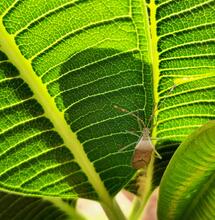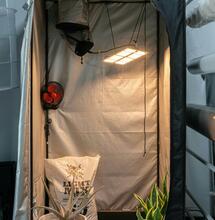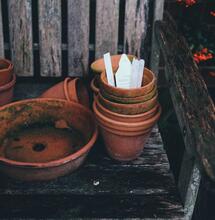Growing in a Greenhouse Part 2

This the second part of an excerpt from the Greenhouse chapter in the new, unpublished 6th Edition of Marijuana Horticulture (AKA the Bible) by Jorge Cervantes. The 7th Edition of Marijuana Horticulture will be available fall 2021. Find all of Jorge´s books at all amazon retailers worldwide.
part 2
This the second part of an excerpt from the Greenhouse chapter in the new, unpublished 6th Edition of Marijuana Horticulture (AKA the Bible) by Jorge Cervantes. The 7th Edition of Marijuana Horticulture will be available fall 2021. Find all of Jorge´s books at all amazon retailers worldwide.
Types of Greenhouses
The type of greenhouse you choose is governed by your growing climate, budget and desires. A greenhouse in mild to cool climates protect plants from heavy rains, desiccating winds and big predators. It also keeps plants warm at night. Such unheated season-extending greenhouses are best for small tender plants and can be removed as plants mature. Freestanding greenhouses can be heated or unheated and placed anywhere. Lean-to greenhouses are attached to another structure, require fewer building materials and are usually less expensive to heat and cool. The size and shape of your greenhouse depends upon your climate and how the sun effects the temperature and humidity inside. The number and size of plants you plan to grow, width of isles and staging area for transplanting, tool and supply storage will dictate the size.
Pathways between beds should be at least 50-60 cm wide. If you plan to wheel wagons, wheelbarrows and other implements around, wider rows will be necessary. Always allow for plant growth over aisles, especially when they are more than 90 cm tall. If benches are added, allow 60-90 cm on each side. Benches placed on the sides of the greenhouse need one central isle in between. Benches on the sides should be no wider than 90 cm so that you can easily reach across from one side. A central bench in the middle of the structure with paths on either side can be from 120-180 cm across.
Install rolling beds on benches to increase greenhouse grow space by up to 20 percent. A single aisle is always open, and the beds can be rolled back and forth by a single worker. Small plants less than 90 cm are best adapted to rolling benches. If you plan to grow under benches you will need more space between benches to move containers. Also consider using lights below benches.
Greenhouses are longer than wide so that the sun traveling along the east-west axis has enough time to heat the structure. A greenhouse with a ratio of 1 wide to 3 long is the minimum to achieve adequate “solar gain.” If the width to length ratio climbs beyond 1 wide to 5 ventilation and microclimate complications become overwhelming and expensive to solve. Search “greenhouse solar gain” on the internet for more information on this subject.
Snow load rating is the extra gravitational force on a greenhouse´s roof added by the weight of accumulated snow and ice. One cubic foot of wet snow contains about 28.5 liters of water and weighs about 28.5 kg. Light fluffy snow weighs about 57 kg per cubic meter. A 3 x 6 m greenhouse will have more than 5,455 kg of snow on the roof!
Snow load is measured in Pounds per Cubic Feet (PCF) or Kilograms per Cubic Meter (KM3)
The best way to calculate snow load is to make an internet search for “greenhouse snow load calculator.” You will find quite a few to choose from. Note that wet snow weighs more than light dry snow.
Avoid most snow load problems by using 120 cm of spacing between trusses or hoops and keeping the plastic very tight. There is no substitute for extra steel. Snow is not allowed to accumulate in sagging low spots.
Spring Season Extending Greenhouses
Use miniature greenhouses—cloches plastic milk jugs Wall-O-Waste, etc.—to extend the spring planting season by 2-6 weeks in cold to moderate climates. Miniature greenhouses protect plants from cold weather, wind and rain. They are easy to use when hardening-off cannabis transplants too. In many climates extending the spring season allows you enough time to plant both a spring crop and a fall crop.
Cloches are individual protective coverings that keep plants warm at night. You can make a simple cloche from a milk container by cutting out the bottom; remove the lid to ventilate. You can purchase cloches or make them out of plastic or glass containers. Commercial cloches are made of rigid transparent plastic or heavy-duty wax paper. They are easy to use and nest for storage. In my hometown, Ontario, Oregon, we bought “hot caps” every year to cover tomato plants to protect from nighttime frost.
Concrete reinforcing wire makes great cannabis cages. Hold sections of the wire together with plastic cable ties. Set up the big cages when you set the transplants outdoors. Wrap the cages with clear plastic and cover the top to form a greenhouse. Remember to leave some natural ventilation that enters from the bottom and exits through the top.
A Wall-O-Water is a water-filled teepee that uses the heat-emitting properties of water to shield plants from excess heat and keep them from freezing. It holds water in connected vertical tubes and fits over a plant. Open the top of the teepee for ventilation during the day. Water absorbs the heat of the sun moderating the temperature inside the teepee. Close the top at night, as the air temperature drops the water releases heat keeping plants comfortable. The Wall-O-Water works in the spring when temperatures drop below freezing. It can protect plants down to -7 degrees C.
Low-profile greenhouses are perfect for crops of short plants. Set up a low-profile hoop greenhouse to cover small plants. Remove the plastic covering when weather warms and replace with netting to form a trellis.
Row tunnels can be made of clear corrugated fiberglass that is bent into an arch and secured over the garden. Commercial row covers come in many sizes; some are large enough to cover dwarf fruit trees. Polypropylene covers protect plants down to about 5 degrees C.
Cover small greenhouses with a sheet or blanket in emergencies. Set up a low-wattage electric light bulb under the covering to raise the temperature 5.5-8 degrees C. Use only grounded fittings, bulbs and do not let it touch any part of the cover to avoid danger of fire.
Spun fiber floating row covers such as Agronet™ and Reemay™ protect spring transplants and short plants from harsh weather and exclude most pests. They will even protect from freeze down to -20-22 degrees C depending on the thickness of the fabric. Floating row covers are manufactured with sun-protection properties that can be used for several seasons with proper care.
Set up low profile hoops over your garden and stretch floating row cover material over them. Anchor fabric along the edges firmly with soil. Rain, snow and ice can add a lot of weight to the fabric that could crush tender plants. And the fabric can freeze to the leaves and damage foliage. Wind damage can tear and shred leaves and break branches.



.png)